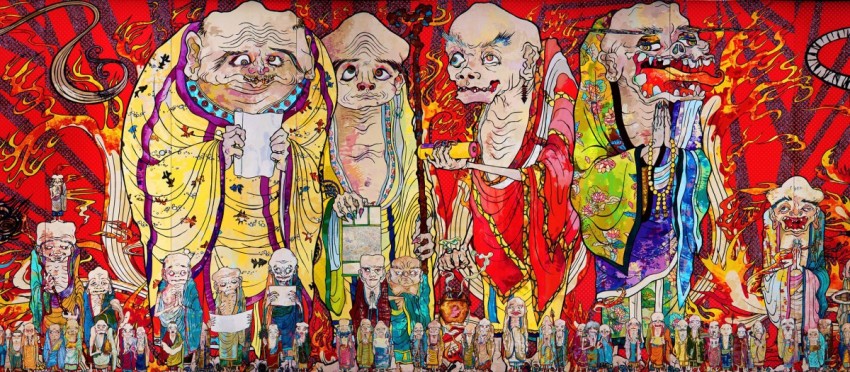
Takashi Murakami is considered one of the most active and significant Japanese artists in the global art scene today. “Takashi Murakami: The 500 Arhats” exhibition at the Mori Art Museum (Tokyo) is eagerly anticipated; while many large-scale exhibitions of Murakami’s works have been held worldwide, such showings in Japan have been extremely limited.
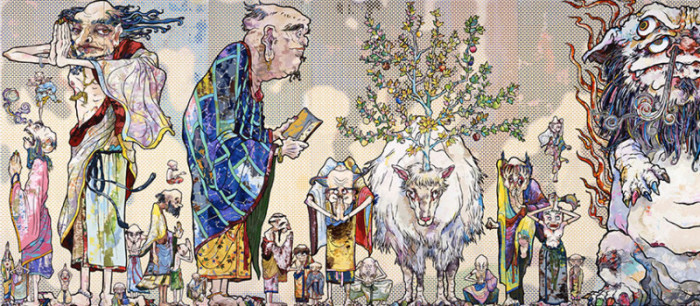
Takashi Murakami is widely known for his character-based artworks associated with ‘otaku culture‘, but also for a broad range of activities beyond such works. He formulated the ‘Superflat‘ art theory, organizes the GEISAI art events, supports young artists, collaborates with musicians and corporate brands, and produces films and animations.
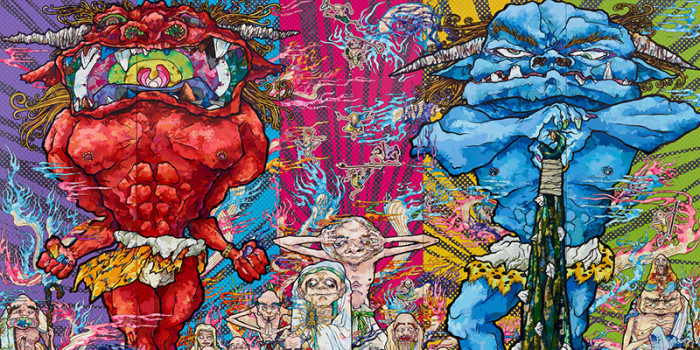
This exhibition will focus on Murakami’s recent works, mainly his epic “The 500 Arhats” (2012), a 3-meter high, 100-meter long painting of the 500 enlightened followers (arhats) of Buddha, created in response to the 2011 Great East Japan Earthquake. Some large sculptural pieces and abstract paintings will also be included.
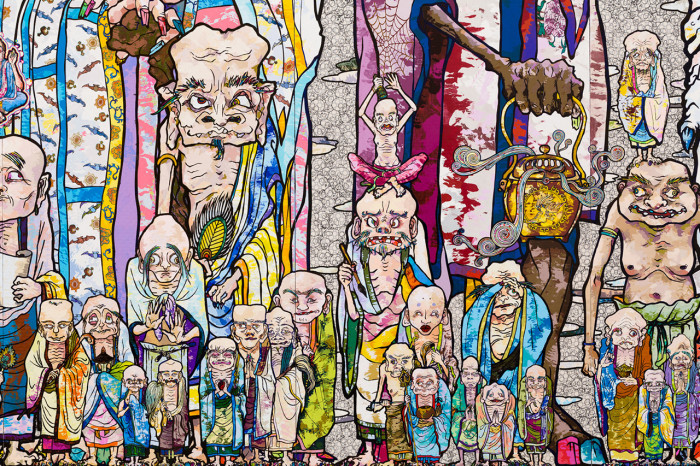
The Japan premiere of Murakami’s “The 500 Arhats” highlights the power of prayer that transcends religious differences in a dynamic vision of the intersection of finite life and the infinite nature and universe. It allows us to understand Murakami’s new artistic interests and directions.
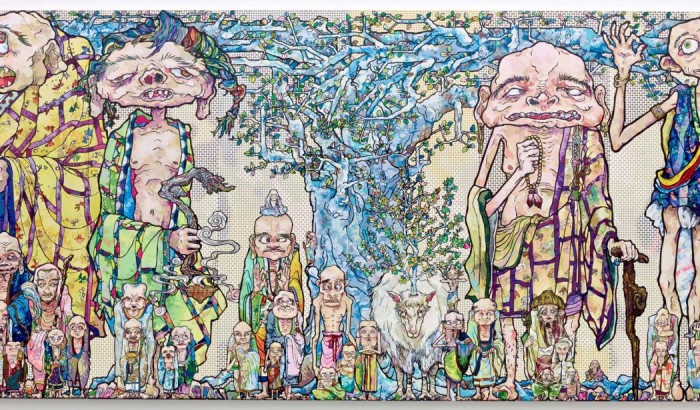
This exhibition at the Mori Art Museum, through the showing of Murakami’s magnum opus and other recent works, will offer an opportunity to examine the role of art and religion in facing social turmoil and human mortality.
Takashi Murakami: The 500 Arhats
31.10.2015 – 06.03.2016
Images courtesy of Mori Art Museum
Discover: www.mori.art.museum



